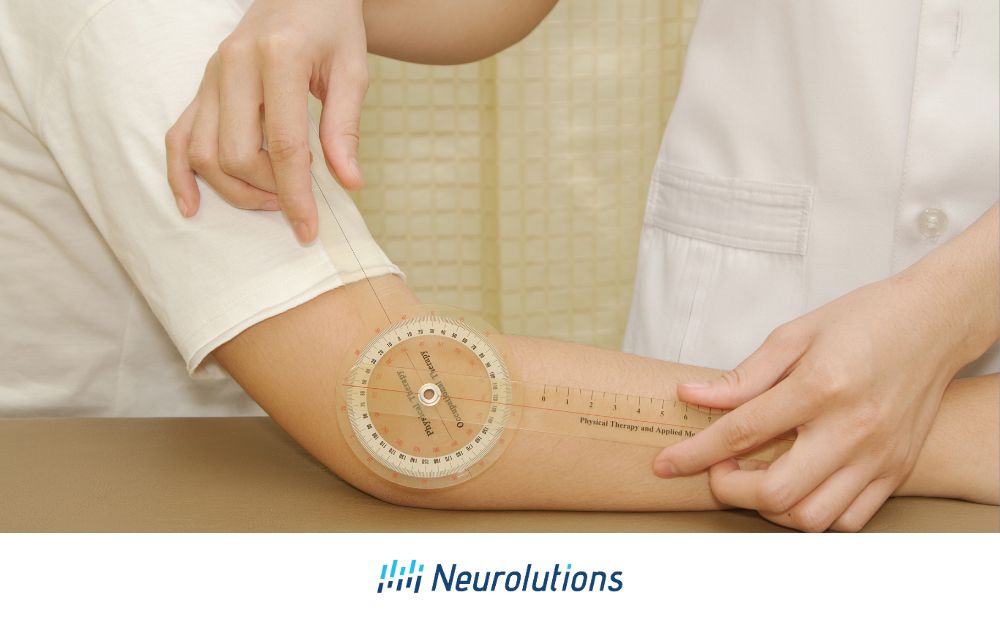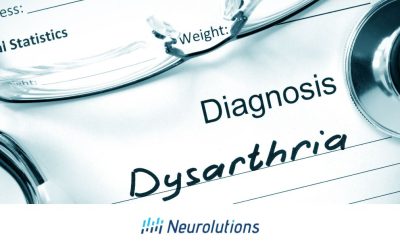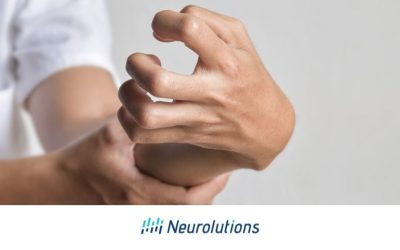A person’s flexibility and ability to move their joints are key to their physical well-being (1). “Range of motion” refers to how far a joint can move, with some joints allowing for more flexibility than others (2). Occupational and physical therapy (OT and/or PT) often focus on exercises to improve an individual’s range of motion. These exercises fall into three categories: passive, active, or a combination of both. For stroke survivors, passive range of motion (PROM) exercises are particularly important, helping them regain movement in paralyzed or weakened limbs. PROM exercises also play a crucial role in maintaining joint flexibility and preventing permanent muscle contractures.
The following article will provide an overview on stroke and its impact on mobility, the implementation of PROM exercises on post-stroke rehabilitation, and how these exercises can make a difference in stroke recovery. Additionally, this article will cover the key role of the caregiver’s participation in PROM exercises and how they can be incorporated into daily routine activities.
Understanding Stroke and Its Impact on Mobility
Strokes can cause weakness or paralysis on one side of the body, making it hard to move muscles.
There are two primary causes of strokes: blood clots that either travel or form in the brain, or bleeding (hemorrhagic) in the brain. While 87% of all strokes are due to blood clots, hemorrhagic strokes are more likely to be fatal (4, 5). In most stroke survivors, only one of the two brain hemispheres is injured in the stroke. Injury to the right hemisphere typically results in paralysis or weakness on the left side of the body, and vice versa. Therefore, one-sided paralysis or weakness is the most common symptom of a stroke. Regardless of whether the stroke is mild or severe, this one-sided paralysis or weakness can impact muscle movements that are necessary for mobility.
Interconnection and Link between Muscles and Nerves:
Nerves in the brain send “messages” to the spinal cord to control muscle movement. During a stroke, blood flow is blocked, or a blood vessel bursts, damaging nerve cells in the brain. This damage stops the messages from getting through, causing muscle paralysis or weakness. In turn, one of the main goals of a stroke rehabilitation program is to enable the stroke survivor to regain lost muscle movements and gradually tackle motor skills such as walking or self-dressing. Therefore, OT and/or PT are an essential component of stroke rehabilitation.
Even if a hospitalized stroke survivor is confined to a bed and unable to move their limbs at all, therapists will typically perform PROM exercises on them. Starting therapy right after a stroke is the best time to help recover motor skills and return to pre-stroke function (6).
What is Passive Range of Motion (PROM)?
Passive range of motion (PROM) exercises can help a person move their joints when they can’t move them themselves.
Passive range of motion (PROM) refers to the maximum range of motion a joint can achieve using an external force, like a therapist or mechanical device (7). The type of joint determines what type of PROM is actually possible, as certain types of joints have a larger range of motion capacity than others. There are three broad classes of the approximately 350 joints in the human body: moveable, slightly moveable and freely moveable. The six types of freely moveable joints are (8):
- Ball and socket: In this joint type, the rounded head of the bone sits within the “cup” of another bone. (Examples: hip joint and shoulder joint.)
- Saddle: In this joint type, movement can be back-and-forth or side-to-side, but it does not allow rotation. (Example: joint at the base of the thumb.)
- Hinge: In this joint type, the two bones open and close in one direction only, like a door. (Examples: knee joint and elbow joint.)
- Condyloid: In this joint type, movement is without rotation. (Examples: finger joints and jaw.)
- Pivot: In this joint, one bone swivels around the “ring” formed by another bone. (Example: joints between the neck.)
- Gliding or plane: In this joint, smooth bone surfaces slip over one another, which allows for limited movement such as up-and-down and side-to-side positioning. (Example: ankle joint.)
When therapists perform PROM exercises on a patient, they only perform exercises appropriate to the joint type to prevent injury to the joint, muscles, ligaments, and tendons. Furthermore, when PROM is used in a PT setting, massage and/or electrical stimulation may be incorporated to promote normal blood flow. These methods can be effective in targeting reduced blood flow to the hands and feet when the limbs are not used in movement.
There are also mechanical and technological devices that can be used for PROM exercising. For patients that are hospitalized following surgery, they might use a Continuous Passive Motion (CPM) machine, which is a motorized device that repetitively moves hips, knees, other joints (9).
Exploring the Role of PROM in Stroke Recovery
Passive Range of Motion Exercises help to keep muscles flexible and prevent stiffness after stroke.
Muscles can become stiff and lose flexibility when not used. Even if a stroke survivor does not experience paralysis or weakness in an upper or lower limb, this can easily happen to the muscles if PROM exercises are not used in their rehabilitation. For example, contractures are permanently stiffened muscles, tendons, or ligaments that can make it impossible to use the affected muscles. This is especially common in the foot or hand of a stroke survivor who has been bed bound for a substantial period of time or if they have not been treated with PROM exercises immediately after stroke. Notably, 50% of all hospitalized stroke survivors develop at least one contracture within six months of their stroke (10).
PROM can address several other conditions experienced by stroke survivors. For example, “foot drop” affects up to 30% of all stroke survivors, with the majority experiencing arm-hand impairments and limited use of the affected arm, wrist, and hand (11, 12). In “foot drop”, the stroke survivor cannot lift the front part of the foot, causing them to drag it instead of raising it when walking (13). Additionally, most stroke survivors are 65 and older and more likely to have wrist and finger arthritis. This could further contribute to reduced hand usage and likelihood of contractures (14).
Risk of Non-Participation in Physical Therapy Exercises Post-Stroke:
The majority of stroke survivors who do not receive OT and/or PT or refuse to participate in the prescribed exercises often avoid using their paralyzed/weakened limb. They may try to compensate for these limbs by relearning to perform routine activities using only the non-weakened arm and hand. Problematically, this can easily lead to contractures in the weakened limb. Also, this lack of use can strain other muscles and joints that are taking on the extra work normally shared by both limbs, leading to painful joint deformities.
Link between Muscle Flexibility and Range of Motion Exercises:
Range of motion exercises that include PROM exercises are crucial to promoting and maintaining muscle flexibility in stroke patients. In contrast, active exercises are necessary for building muscle strength and tone. Thus, therapists will typically utilize a combination of PROM and active exercises to help a stroke survivor regain lost motor skills and return to self-performance of Activities of Daily Living (ADLs).
Getting Started with PROM: Basic Principles
Passive Range of Motion exercises should be done carefully, following specific guidelines to avoid injury.
PROM exercises should begin as soon as possible after the stroke. The four basic principles of PROM – whether self-performed by the stroke survivor or performed by the therapist on the stroke survivor’s body – are the following:
- Before beginning any PROM exercise routine, a therapist should perform an assessment of current range of motion capacity so progress can be measured.
- Stop the PROM exercise if sharp pain is experienced.
- The joint of the person receiving the associated PROM exercise should be relaxed.
- Perform each exercise slowly and smoothly.
As previously mentioned, PROM exercises on a joint need to be aligned with the specific joint type rather than some other joint type. Otherwise, an injury to the joint can occur. For example, attempting to move the elbow in a similar fashion to a shoulder joint can strain or tear a muscle connected to that elbow joint because the shoulder is a different joint type.
Overall, the five key potential benefits of PROM exercises are the following:
- Improved joint flexibility
- Reduced muscle paralysis and spasticity
- Enhanced blood circulation in body area that is the recipient of the PROM exercises
- Decreased risk of contractures
- Enabling future engagement in active exercising that is dependent on adequate joint range of motion
Understanding Planes of Motion:
Caregivers involved in performing PROM exercises on a stroke survivor will want to have some knowledge of the terms used by therapists. For example, these are the three planes of motion referenced when describing a particular PROM exercise (15, 16):
- Sagittal: This plane divides the body into right and left based on an imaginary line down the middle of the body. Thus, the forward and backward movement parallel to this imaginary line occurs in the sagittal plane.
- Frontal: This plane divides the body into front and back halves, with an imaginary line between these two halves. Thus, any lateral or side movement that occurs parallel to this imaginary line occurs in the frontal plane.
- Transverse: This plane divides the body into upper (superior) and lower (inferior) halves, with an imaginary line between these two halves. Therefore, movement parallel to the waistline occurs in the transverse plane.
Step-by-Step Guide to PROM Exercises
There are specific Passive Range of Motion exercises for different joints that help improve movement.
There are PROM exercises that are designed for each slightly or freely moveable joint in the body. However, PROM exercises performed on stroke survivors are most often likely to focus on the upper and lower extremities. For the upper extremities, PROM exercises address the shoulder, elbow, wrist, and finger joints. For the lower extremities, PROM exercises address the hip, knee, ankle, and toe joints.
What Are Examples of Upper Extremity Exercises?
Upper extremity Passive Range of Motion Exercises are for the shoulders, elbows, wrists, and fingers.
Shoulder – This exercise focuses on improving the bending and straightening of the shoulder joint, typically done with slow repetitions, up to a maximum of 10 times.
In performing this exercise, gently lift your arm overhead, then slowly lower it down. This exercise can be performed as a PROM exercise by a therapist on the patient or self-performed by the patient.
Elbow – Bend the elbow so that the hand is close to or touching the shoulder. Next, slowly straighten the arm back down at the side, such that the elbow is no longer bent. Perform this exercise with slow repetition for a total of 10 times at most. This exercise can be performed as a PROM exercise by a therapist on the patient, or self-performed by the patient.
Wrist – Bend the wrist forward and then backward. Perform this exercise with slow repetition for a total of 10 times at most. This exercise can be performed as a PROM exercise by a therapist on the patient, or self-performed by the patient.
Fingers – The fingers can be each pulled forward by a therapist, other clinician, or a technological/mechanical device. This stretches the muscles attached to the finger joints. The fingers can also each be moved forward and then back to the original straight position as aligned with the palm of the hand and wrist. Similar to the previous exercises, this forward/backward exercise of the fingers is repeated slowly for a total of 10 times at most.
What Are Examples of Lower Extremity Exercises?
Lower extremity Passive Range of Motion Exercises are for the hips, knees, and ankles.
Hip – While lying on the back on a flat surface, lift each leg straight up and then back down again. This can be repeated 5-10 times at most for each hip.
Knee – While lying on the back on another flat surface, bend the knee so as to lift the leg toward the chest. Lift the leg toward the chest and hold it for a few seconds. Then, return the leg to a straight position with the knee not bent, onto the bed or flat surface. This can be repeated 5-10 times at most for each knee.
Ankle – While lying on the back on a flat surface, pull the toes up toward the shin of the leg (dorsiflexion), such that the ankle moves dorsally. Then, straighten back the toes so that they are returned to a position of a straight line with the top of the foot. This ankle stretch can be repeated 5-10 times at most for each ankle.
Where to Find PROM Exercises with Illustrations
Passive Range of Motion exercises might be easier with visual representations for guidance. Fortunately, descriptions and illustrations are available on various health websites.
Descriptions with illustrations of various range of motion (ROM) exercises can be viewed online or in various physical therapy textbooks. A few websites that contain descriptions with illustrations of ROM exercises are:
- National Health Service, Oxford Health (United Kingdom). Knee Exercises. https://www.oxfordhealth.nhs.uk/wp-content/uploads/2014/08/OP-151.15-Knee-exercises.pdf
- ALS Worldwide. See downloadable PDF at: https://alsworldwide.org/assets/misc/RANGE_OF_MOTION_EXERCISES_WITH_PHOTOS_copy.pdf
- OrthoInfo website of the American Academy of Orthopedic Surgeons (AAOS). Foot and Ankle Exercises. https://www.orthoinfo.org/globalassets/pdfs/2022-rehab_foot-and-ankle_final.pdf
- Get Your Neurolutions Stroke Exercise Playbook
PROM exercise videos can be found online through various medical center websites and YouTube.
Understanding the Caregiver’s Role in PROM
Caregivers play a crucial role in helping stroke survivors safely practice their Passive Range of Motion Exercises.
Caregivers of stroke survivors can aid them in performing prescribed PROM exercises. Caregivers can remind the stroke survivor to perform the daily exercises or simply motivate them by providing positive feedback. In some circumstances, it may take the form of hands-on assistance by performing the PROM exercise on the stroke survivor, or helping that person through the set-up of a technological or mechanical device that performs the PROM exercises.
Since cognitive impairments such as short-term memory problems and chronic fatigue are common among stroke survivors, caregivers can play an important role in boosting the likelihood that a stroke survivor will continue to perform prescribed PROM exercises after discharge from a hospital or rehab center. The person-to-person interaction can also boost the likelihood that a discouraged stroke survivor will persist with OT and/or PT exercises despite periodic setbacks.
Key Takeaways About Passive Range of Motion Exercises
Passive Range of Motion (PROM) exercises are crucial for stroke survivors to maintain muscle flexibility and prevent stiffness. This may help stroke survivors regain lost motor skills.
Passive range of motion exercises (PROM) are crucial in enabling stroke survivors to recover from limb paralysis or weakness and regain lost motor skills. While PROM exercises are typically performed by a therapist on the patient’s body, some exercises can be performed by patients themselves. There are also technological and mechanical rehab devices that perform various PROM exercises on a person’s limbs. Besides stretching and range of motion exercises, passive exercises in a rehabilitation program can also include massage, electrical stimulation, and the use of other rehab devices.
The main purpose of PROM exercises is to enable a person’s paralyzed and weakened muscles to retain their flexibility and tone. Additionally, PROM exercises are performed to potentially prevent permanent contractures from developing. Thus, PROM exercising is a stepping stone to participating in active exercises aimed primarily at increasing muscle mass and strength.
Both passive and active exercises are prescribed by physical and occupational therapists to stroke and Traumatic Brain Injury (TBI) patients to aid in the recovery of motor skills, such as walking and self-dressing. Engaging in stroke rehab exercises aimed at motor skill recovery can boost brain plasticity which can boost motor skill recovery. PROM is just one of the rehabilitation approaches used to enable stroke survivors to regain as much pre-stroke independence in performing routine activities as possible.
References:
- Cleveland Clinic (Cleveland, OH). Joints. Webpage: https://my.clevelandclinic.org/health/body/25137-joints
- Arthritis Foundation. Benefits of Exercise for Osteoarthritis. Webpage: https://www.arthritis.org/health-wellness/healthy-living/physical-activity/getting-started/benefits-of-exercise-for-osteoarthritis
- InformedHealth.org. (August 27, 2022). Physical Therapy. Cologne, Germany: Institute for Quality and Efficiency in Health Care (IQWiG). [Internet only] Webpage: https://www.ncbi.nlm.nih.gov/books/NBK561514/
- American Stroke Association. Ischemic Stroke (Clots). Webpage: https://www.stroke.org/en/about-stroke/types-of-stroke/ischemic-stroke-clots#:~:text=An%20ischemic%20stroke%20occurs%20when,about%2087%25%20of%20all%20strokes.
- Salvadori E, Papi G, Insalata G, et al. (2020). Comparison between Ischemic and Hemorrhagic Strokes in Functional Outcome at Discharge from an Intensive Rehabilitation Hospital. Diagnostics (Basel) 11(1): 38. Webpage: https://www.ncbi.nlm.nih.gov/pmc/articles/PMC7824133/#:~:text=Overall%2C%20the%20general%20prognosis%20of,phases%20%5B2%2C3%5D.
- National Institutes of Health (NIH). (September 28, 2021). Critical time window for rehabilitation after a stroke. Webpage: https://www.nih.gov/news-events/nih-research-matters/critical-time-window-rehabilitation-after-stroke
- Hudson S. (2009). Chapter 28. Rehabilitation Methods and Modalities for the Cat. In: (Gaynor JS and Muir WW III, Editors). Handbook of Veterinary Pain Management. (Second Edition). Mosby Elsevier: St. Louis, MO; pp. 538-577. Webpage: https://www.sciencedirect.com/topics/immunology-and-microbiology/range-of-motion#:~:text=Passive%20range%20of%20motion%20can,that%20a%20joint%20can%20move.
- Better Health Channel [Victoria State Government, Australia]. Joints. Webpage: https://www.betterhealth.vic.gov.au/health/conditionsandtreatments/joints
- Lenssen TA, van Steyn MJ, Crijns YH, et al. (2008). Effectiveness of prolonged use of continuous passive motion (CPM), as an adjunct to physiotherapy, after total knee arthroplasty. BMC Musculoskeletal Disorders 9: 60. Webpage: https://www.ncbi.nlm.nih.gov/pmc/articles/PMC2386789/
- Kwah LK, Harvey LA, Diong JHL, et al. (2012). Half of the adults who present to hospital with stroke develop at least one contracture within six months: an observational study. Journal of Physiotherapy 58(1): 41-47. Webpage: https://www.sciencedirect.com/science/article/pii/S1836955312700711#:~:text=About%20half%20of%20all%20patients,from%2012%25%20to%2028%25.
- Peishun C, Haiwang Z, Taotao L, et al. (2021). Changes in Gait Characteristics of Stroke Patients with Foot Drop after the Combination Treatment of Foot Drop Stimulator and Moving Treadmill Training. Neural Plasticity 2021: 9480957. Webpage: https://www.ncbi.nlm.nih.gov/pmc/articles/PMC8629651/
- Franck JA, Smeets RJEM, and Seelen HAM. (2019). Changes in actual arm-hand use in stroke patients during and after clinical rehabilitation involving a well-defined arm-hand rehabilitation program: A prospective cohort study. PLoS One 14(4): e0214651. Webpage: https://www.ncbi.nlm.nih.gov/pmc/articles/PMC6443150/
- American Stroke Association. Foot Drop. Webpage: https://www.stroke.org/en/about-stroke/effects-of-stroke/physical-effects-of-stroke/physical-impact/foot-drop#:~:text=Foot%20drop%20is%20a%20common,or%20scuffing%20along%20the%20ground.
- Yousufuddin M, and Young N. (2019). Aging and ischemic stroke. Aging (Albany NY) 11(9): 2542-2544. Webpage: https://www.ncbi.nlm.nih.gov/pmc/articles/PMC6535078/
- Edwards M. (August 1, 2017). The Planes of Motion Explained. AceFitness.org Webpage: https://www.acefitness.org/fitness-certifications/ace-answers/exam-preparation-blog/2863/the-planes-of-motion-explained/
- National Academy of Sports Medicine (NASM). Sagittal, Frontal and Transverse Body Planes: Exercises & Movements. Webpage: https://blog.nasm.org/exercise-programming/sagittal-frontal-traverse-planes-explained-with-exercises?utm_source=blog&utm_medium=referral&utm_campaign=organic&utm_content=ReasonsToBecomeCES






